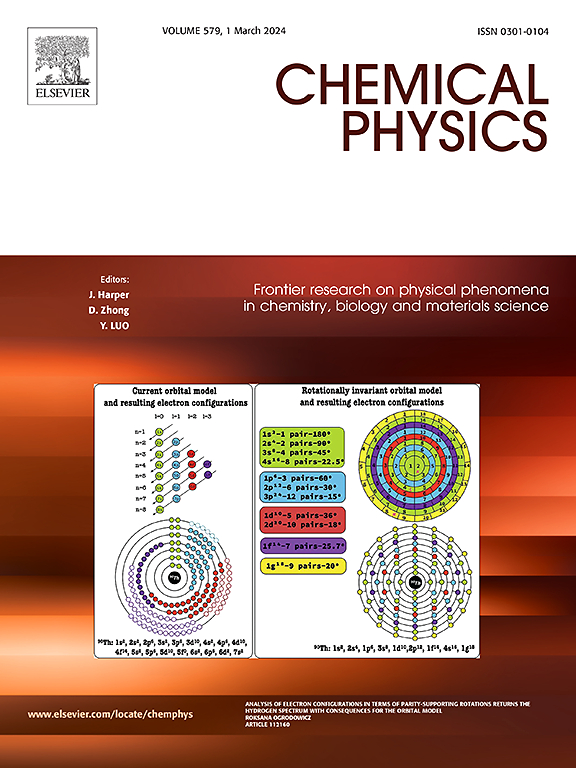Theoretical calculation of single-atom supported BN catalyzing CO2 hydrogenation to formic acid: A first principles study
IF 2.4
3区 化学
Q4 CHEMISTRY, PHYSICAL
引用次数: 0
Abstract
Exploring suitable catalysts for CO2 hydrogenation is crucial to alleviate greenhouse effect and produce useful chemicals. In this work, the potential of a single transition metal atom embedded in a boron nitride monolayer (TM-BN) as a catalyst for CO2 hydrogenation to formic acid was evaluated using first-principles calculations. The TM-BN systems (TM = Sc, Ti, V, Cr and Mn) exhibit significant stability due to the strongly interaction between the TM-3d orbitals and the 2p orbitals of the three surrounding N atoms. While, only V-BN system shows the strongest adsorption energies of CO2 and H2 than others. Four mechanisms were proposed for CO2 hydrogenation to formic acid, where the process including CO2 absorbed on V-BN monolayer in side-on type as initial state has the lowest energy barriers of 0.44 eV. This work not only provides a new way for CO2 hydrogenation but also further broadens the range of applications for BN-based materials.

单原子负载BN催化CO2加氢制甲酸的理论计算:第一性原理研究
探索合适的CO2加氢催化剂对于缓解温室效应和生产有用的化学品至关重要。在这项工作中,利用第一性原理计算评估了嵌入氮化硼单层(TM-BN)中的单个过渡金属原子作为CO2加氢制甲酸催化剂的潜力。TM- bn体系(TM = Sc, Ti, V, Cr和Mn)由于TM-3d轨道与周围3个N原子的2p轨道之间的强相互作用而表现出显著的稳定性。而只有V-BN体系对CO2和H2的吸附能最强。提出了4种CO2加氢制甲酸的机理,其中以侧对型V-BN单层吸收CO2为初始态的过程能垒最低,为0.44 eV。这项工作不仅为CO2加氢提供了新的途径,而且进一步拓宽了bn基材料的应用范围。
本文章由计算机程序翻译,如有差异,请以英文原文为准。
求助全文
约1分钟内获得全文
求助全文
来源期刊

Chemical Physics
化学-物理:原子、分子和化学物理
CiteScore
4.60
自引率
4.30%
发文量
278
审稿时长
39 days
期刊介绍:
Chemical Physics publishes experimental and theoretical papers on all aspects of chemical physics. In this journal, experiments are related to theory, and in turn theoretical papers are related to present or future experiments. Subjects covered include: spectroscopy and molecular structure, interacting systems, relaxation phenomena, biological systems, materials, fundamental problems in molecular reactivity, molecular quantum theory and statistical mechanics. Computational chemistry studies of routine character are not appropriate for this journal.
 求助内容:
求助内容: 应助结果提醒方式:
应助结果提醒方式:


